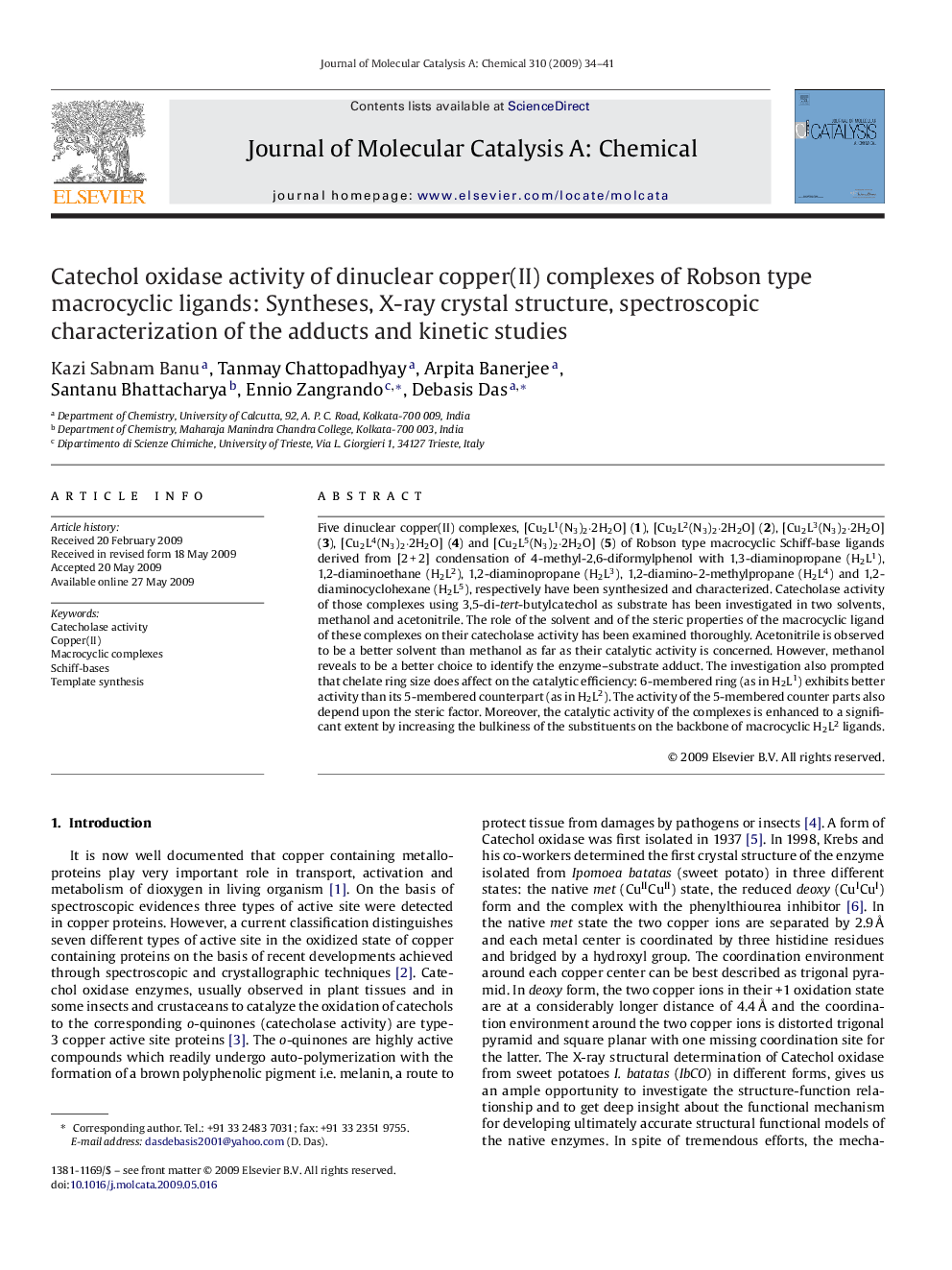| Article ID | Journal | Published Year | Pages | File Type |
|---|---|---|---|---|
| 66911 | Journal of Molecular Catalysis A: Chemical | 2009 | 8 Pages |
Five dinuclear copper(II) complexes, [Cu2L1(N3)2·2H2O] (1), [Cu2L2(N3)2·2H2O] (2), [Cu2L3(N3)2·2H2O] (3), [Cu2L4(N3)2·2H2O] (4) and [Cu2L5(N3)2·2H2O] (5) of Robson type macrocyclic Schiff-base ligands derived from [2 + 2] condensation of 4-methyl-2,6-diformylphenol with 1,3-diaminopropane (H2L1), 1,2-diaminoethane (H2L2), 1,2-diaminopropane (H2L3), 1,2-diamino-2-methylpropane (H2L4) and 1,2-diaminocyclohexane (H2L5), respectively have been synthesized and characterized. Catecholase activity of those complexes using 3,5-di-tert-butylcatechol as substrate has been investigated in two solvents, methanol and acetonitrile. The role of the solvent and of the steric properties of the macrocyclic ligand of these complexes on their catecholase activity has been examined thoroughly. Acetonitrile is observed to be a better solvent than methanol as far as their catalytic activity is concerned. However, methanol reveals to be a better choice to identify the enzyme–substrate adduct. The investigation also prompted that chelate ring size does affect on the catalytic efficiency: 6-membered ring (as in H2L1) exhibits better activity than its 5-membered counterpart (as in H2L2). The activity of the 5-membered counter parts also depend upon the steric factor. Moreover, the catalytic activity of the complexes is enhanced to a significant extent by increasing the bulkiness of the substituents on the backbone of macrocyclic H2L2 ligands.
Graphical abstractCatecholase activity of dinuclear copper(II) complexes of macrocyclic ligands has been investigated to understand the role of chelate ring size, steric, electronic and that of solvent.Figure optionsDownload full-size imageDownload as PowerPoint slide
